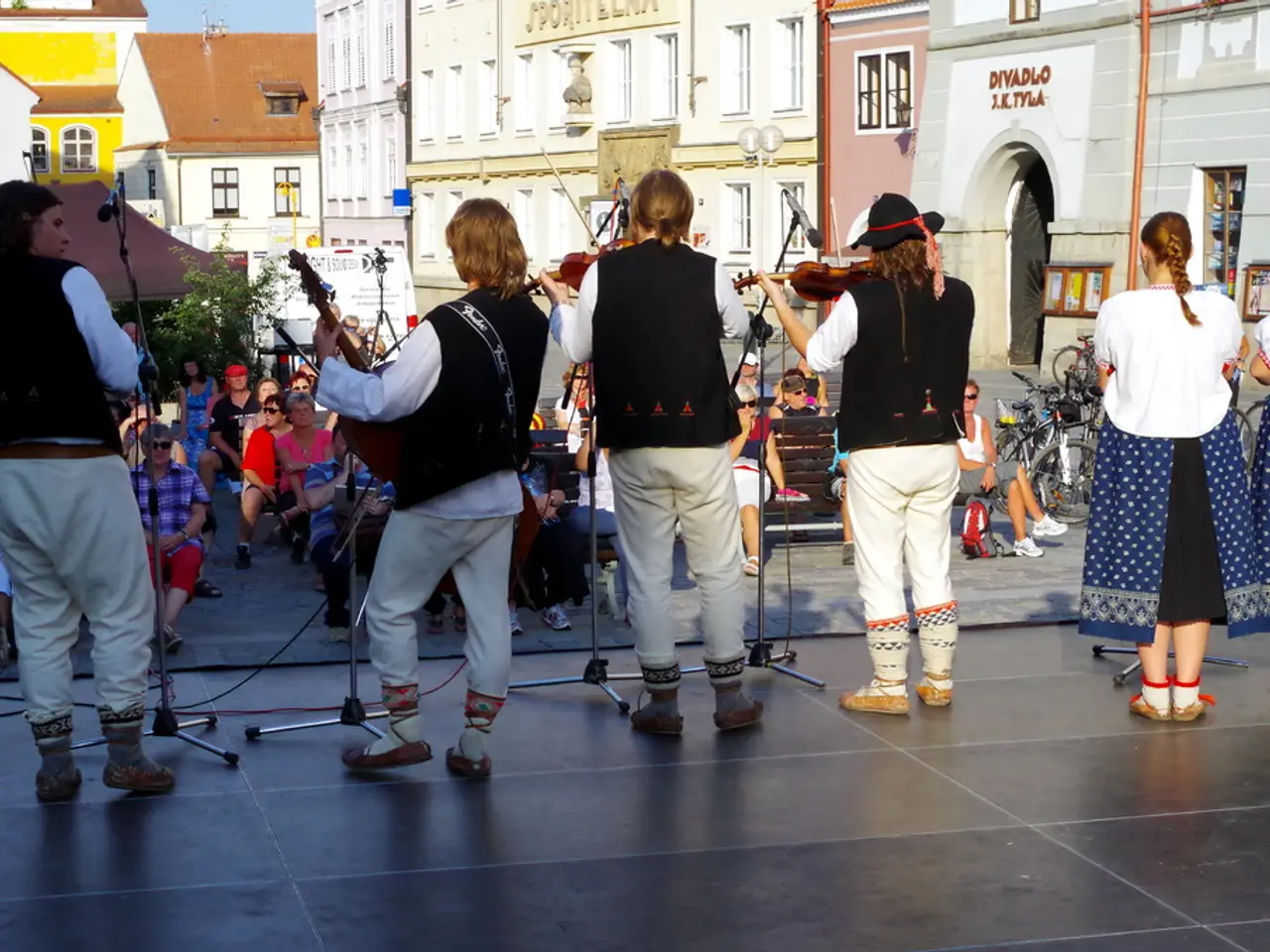Free Access to Notes on Theory and Practice of Classical Indian Drama for BA and MA Students
The Natya Shastra, an ancient work on performing arts, serves as the cornerstone of traditional Indian theatre. This comprehensive guide, believed to have been authored by the sage Bharata around 200 BCE to 200 CE, provides the methods and aesthetic standards that have shaped classical Indian drama for over two millennia.
Historically, the Natya Shastra provided the systematic framework and codified rules for classical Indian drama and performance arts. It integrated literary narrative, music, and dance into a unified form called "Natya"—a synthesis of storytelling through expressive movement and sound. This holistic approach not only influenced entertainment but also had deep spiritual and cultural resonances, aligning performance with religious themes and emotional expression (Abhinaya).
The text elaborates on dramaturgical concepts such as plot construction, characterization, rasa (aesthetic flavor or emotional essence), and bhava (emotional expression), which remain central to Indian classical dramaturgy. It details technical elements like stagecraft, makeup, costume, gestures (mudras), and dance movements such as the 32 Angaharas and 108 Karanas, often linked to sacred dances like Shiva’s Tandava. Its emphasis on rasa theory established a sophisticated understanding of audience experience, making performance an interactive, transformative act.
Classical Indian drama has roots in the ancient Sanskrit tradition and encompasses a variety of dramatic styles. Koodiyattam, performed in temples of Kerala, is known for its elaborate dialogue delivery and slow-paced movements. Kathakali, another classical dance-drama form, originated in Kerala and is famous for its elaborate costumes, makeup, and facial expressions. Kutiyattam, another form of Sanskrit drama, is characterised by its intricate dialogue delivery and deliberate movements.
The Natya Shastra's enduring influence is evident in classical Indian dance forms such as Bharatanatyam, where its principles of expression (Abhinaya), rhythm (Tala), and melody (Raga) are foundational. Moreover, the text’s fusion of artistic disciplines has enabled it to shape Indian cultural heritage, preserving and guiding performing traditions for centuries.
Rasa Theory, a crucial contribution of the Natya Shastra, describes emotional experiences that a play should evoke in the audience. Voice modulation, facial expressions, and gesture-based acting (mudras) are essential components of Indian acting, playing a crucial role in conveying the bhavas and producing a rasa.
Classical Indian drama incorporates natyashastra-based dance movements and musical compositions into its performances. Ensemble performances are common, with actors working together to create a harmonious and cohesive presentation. Actor training in gurukulas, traditional residential schools, is a time-honoured practice, ensuring the preservation and transmission of these ancient arts.
In sum, the Natya Shastra is historically significant as the earliest comprehensive guide to Indian performing arts and theoretically foundational for codifying the principles that govern classical Indian drama’s aesthetics, performance practice, and spiritual symbolism. Its influence continues to be felt in contemporary Indian theatre and dance, making it a vital link between the past and the present of Indian cultural heritage.
[1] Gold, Oliver (2003). The Beauty of the Dance: A History of Classical Indian Dance. Oxford University Press. [2] Srinivasan, S. (2005). The Natyashastra: The Ancient Indian Treatise on Drama, Music, and Dance. Motilal Banarsidass Publishers. [3] Ramaswamy, R. (2001). The Passions of the Gods: Sexuality, Desire, and Aesthetics in Indian Religious Imagery. University of Chicago Press. [4] Widdess, B. (2005). Bharatanatyam: The Indian Dance of Storytelling. Thames & Hudson.
- The Natya Shastra, an ancient work, not only serves as a systematic framework for classical Indian drama but also plays a significant role in shaping the literatures, characters, and overall lifestyle by integrating narrative, music, and dance into a unified form called "Natya".
- Education and self-development in the performing arts can be traced back to the Natya Shastra, as its principles are foundational in classical Indian dance forms like Bharatanatyam, teaching techniques such as expression (Abhinaya), rhythm (Tala), and melody (Raga).
- The Natya Shastra's influence extends beyond the realm of traditional Indian theatre to home-and-garden activities such as Kutiyattam, an intricate form of Sanskrit drama, and contemporary dance-drama forms like Kathakali, which share commonalities in costume, makeup, and facial expressions.
- Learning from the Natya Shastra is often done through training in gurukulas, traditional residential schools, that ensure the preservation and transmission of these ancient arts, making the text a crucial piece of education-and-self-development relevant to modern times.




